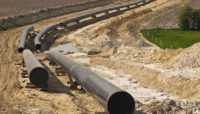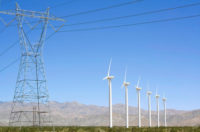Designation of “national interest electric transmission corridors” by the Dept. of Energy will speed up the power-line siting process for some of the country’s most congested load centers, stakeholders say. But the proposal, the first of a series under the Energy Policy Act of 2005, also has stirred opposition from lawmakers representing the targeted areas.
| + click to enlarge |
 |
On April 26, DOE proposed one corridor in the mid-Atlantic states and another in the Southwest (maps). EPAct 2005 authorized the Federal Energy Regulatory Commission to permit transmission lines within the DOE-defined corridors should state regulators fail to act on applications within a year. Proponents predict the designations will tame what can be an unwieldy state and local process for building transmission infrastructure.
The implied leverage will bring necessary attention on due process so that identified transmission needs “will not get unduly delayed…for years and years,” says Don Mundy, senior vice president for power-delivery strategies for Black & Veatch, Kansas City. “One of the issues developers face is this sort of never-ending process,” he adds. Corridor designations and the federal authority they carry “will force a conclusion,” Mundy says.
But lawmakers from Virginia and New York are pursuing legislation to repeal the section of EPAct 2005 that created this “backstop” authority. Rep. Tom Davis (R-Va.) says demand-side management and conservation also should be considered when planning for energy needs. “It is important that the federal government not needlessly usurp the longstanding authority and role of the states on this issue,” Davis says.
DOE will soon launch a 60-day comment period. Once the comments are considered, Secretary of Energy Samuel W. Bodman may approve, adjust or reject the proposed designations.



Post a comment to this article
Report Abusive Comment